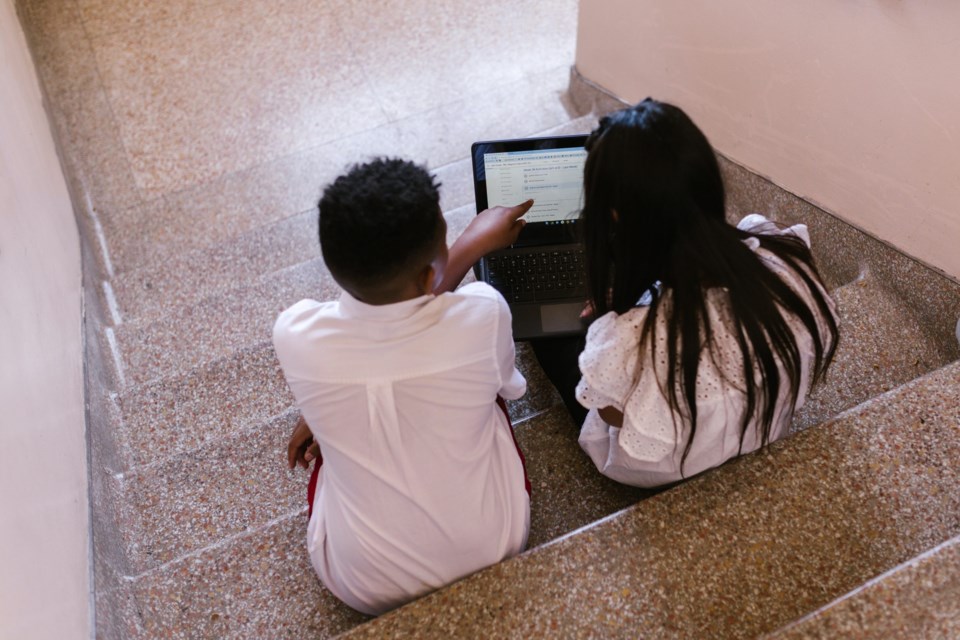This article is the final instalment in a two-part series looking into NYC public schools reopening amidst the coronavirus pandemic. The first instalment looked at the City's plan and parents' reactions to it.
On September 13, all 300,000 Brooklyn public school students will return to full-time, in-class instruction, without a mainstream remote option.
However, the recent surge of the COVID-19 Delta variant has severely impacted children, provoking alarm from parents who are concerned that the new virus surge will capsize the school year and put their children at risk.
Mayor Bill de Blasio announced the safety protocols for public schools last Thursday in a Department of Education handbook and has made efforts to reassure parents full-time, in-person learning will be beneficial and safe.
Tamara Mose, a professor of Sociology at the Brooklyn College, seconded de Blasio's view, telling BK Reader that reopening schools would combat the negative social and psychological impacts school closures have had on children.
"The isolation has played a role in how children are now socializing and these are their key socialization years," Mose said.
"These are the years they form bonds, so having to be removed from all of that changes the landscape of their socialization. I think it is a great idea to have children back in school, as long as they're following safety protocols."
Kitaw Demissie, dean and professor at SUNY Downstate's school of public health in Brooklyn, agreed that schools should reopen despite the potential surge. "The challenge is that the disease is back, but at the same time you have to give children the benefits that they get from going to school."
As of now, the only students still eligible for remote learning are students with autoimmune diseases and other disabilities, as part of Individualized Education Programs, an existing public program that is typically quite small.
The vaccination issue
School staff members, except those with medical exemptions, must have their first COVID-19 vaccine dose by September 27, the city and state have both ordered.
Though there are vaccine mandates in public schools for other diseases, there is no COVID-19 vaccine requirement for eligible students as of now. Children 12 and up are approved to get the COVID-19 vaccine, however younger students are still ineligible.
Eligible students wishing to participate in Public School Athletic League's after-school sports like lacrosse, basketball, football and volleyball will have to show proof of vaccination..
Cynthia Leifer, a professor of Immunology at Cornell University, said she believed a vaccine mandate for eligible students and staff was warranted, adding that there were existing mandates for other infectious and transmissible diseases "to protect our students."
"Though, of course, medical exemptions should be honored."
Masking, distancing and ventilation
Staff and students will be expected to wear a mask indoors, outdoors and on school buses at all times, except for eating times which may be staggered. All staff and students will maintain a distance of three feet whenever possible, and all larger rooms and outdoor spaces will be used.
However, the teachers' union has estimated there are at least 200 schools that don't have enough room to distance properly. The Centers for Disease Control and Prevention said three feet was ideal, but that schools should prioritize in-person learning without it.
Janet Rosenbaum, a professor of epidemiology at Suny Downstate in Brooklyn, said masking and ventilation, when done properly, were highly effective.
"I think we're at a tricky point because the positivity rates have gone up and leveled off in New York City, but other places in the country are having really crazy surges. Ventilation, testing and masks are our main tools," Rosenbaum said. "This a time for everyone to be extra cautious."
Whether or not distancing would be feasible, the Department of Education has promised two air purifiers per classroom. However, some teachers have said the purifiers the DOE has bought were insufficient.
Testing and quarantining
The city will test a random sample of 10% of unvaccinated people in schools every other week. That means all children in elementary school will be subjected to testing, with a caretaker's consent, while only unvaccinated middle and high schoolers will be tested.
The testing program is smaller in scope compared to last year, when over half of all public school families chose remote learning. Last school year, the City initially tested 10% of all people in schools, but increased it to 20% in the spring.
There will also be a daily health screening, much like last year's, which will include a brief form to fill out.
When someone in the school tests positive, depending on their age, the school will follow different protocols, and quarantines will be accompanied by remote learning. For students under age 12, a positive case will result in the entire class quarantining for 10 days. Unvaccinated children over 12 will also be expected to quarantine for 10 days, with the option to test out after day 7.
For vaccinated students over age 12, a positive case does not mean they have to quarantine at all, but they will be encouraged to monitor their symptoms and get tested.
"The thing about COVID-19 is that all of our data is coming a little bit after the events have already happened," Rosenbaum said. "When we see an increase in cases, that means that it was spreading a week ago at a higher rate. This is why we need to screen and do random tests as much as possible."
This year, City officials are not setting a specific number of COVID cases that close a school. Instead, the City will only consider closures if there is "widespread transmission" in a school, the DOE said. However, there hasn't been specific criteria released on what "widespread transmission" would look like.
"When the [DOE] layers all of these things -- masking, testing, tracing, quarantining, ventilation and vaccination -- schools can really control the infection," Demissie said. "They cant eliminate it completely but they can minimize it."




